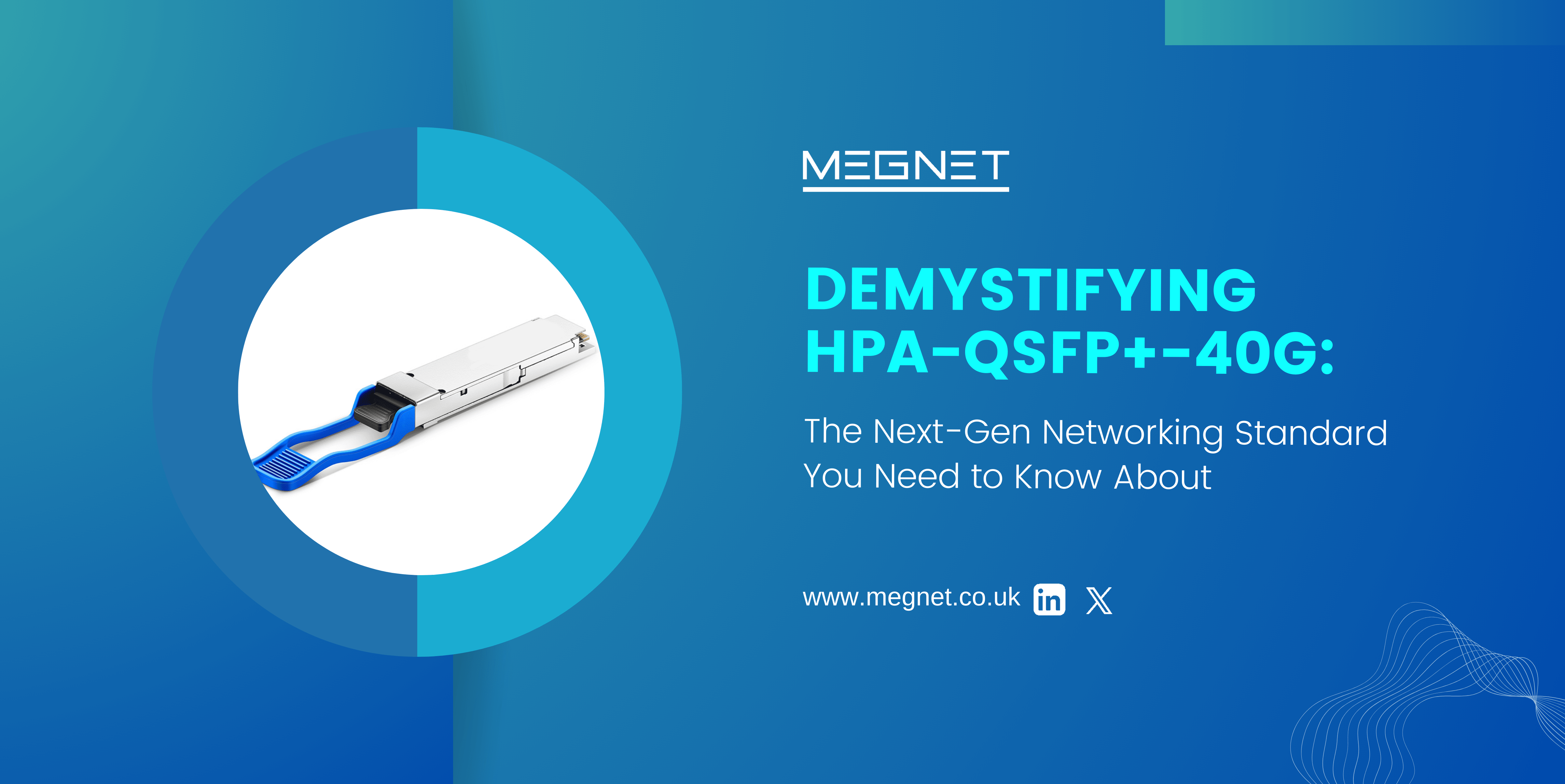
The data deluge is relentless! Data centres and businesses are constantly battling bandwidth limitations. In this ever-demanding landscape, HPA- QSFP+-40G emerges as a hero, offering a significant leap in networking capabilities. This blog dives deep into HPA- QSFP+-40G technology, exploring its benefits, applications, and how it compares to its predecessor, QSFP+.
We’ll also unveil deployment considerations, troubleshooting techniques, and peek into the exciting future of this next-gen networking standard. Buckle up and get ready to unlock the potential of HPA- QSFP+-40G for your network!

Here is where the magic happens.
QSFP+ (Quad Small Form-factor Pluggable): This refers to a standardised, hot-pluggable transceiver module. These compact modules plug into network devices like switches and routers, enabling them to communicate with other devices over various cabling infrastructures.
40 Gigabit Ethernet (GbE): This specifies the data transfer rate that HPA- QSFP+-40G supports – a staggering 40 Gigabits per second (Gbps). This is a fourfold increase compared to the 10 Gbps offered by standard SFP+ technology.
In simpler terms, HPA- QSFP+-40G is a high-speed, hot-pluggable transceiver that injects a powerful dose of bandwidth into your network. It allows network devices to communicate with each other at blazing-fast speeds, ensuring smooth data flow and supporting the ever-growing data demands of modern applications.
Benefits of HPA- QSFP+-40G
The adoption of HPA- QSFP+-40G technology unlocks a multitude of advantages that can significantly enhance the performance and efficiency of your network infrastructure. Here’s a closer look at some of the key benefits that make HPA- QSFP+-40G a compelling choice for businesses of all sizes:
Unmatched Speed and Bandwidth
Compared to its predecessor, QSFP+, HPA- QSFP+-40G boasts a staggering fourfold increase in data transfer rate, reaching a blazing-fast 40 Gigabits per second (Gbps). This translates to real-world benefits like significantly faster file transfers, smoother video streaming, and improved responsiveness for bandwidth-intensive applications.
Imagine seamlessly transferring massive datasets, supporting high-resolution video conferencing without lag, or enabling real-time collaboration tools to function flawlessly – all within the reach of your upgraded network.
Future-Proof Scalability
As your organisation grows and data demands escalate, HPA- QSFP+-40G provides a future-proof solution. Its high bandwidth capabilities can effortlessly accommodate expanding data traffic, ensuring your network remains efficient and adaptable to evolving needs.
Whether you’re planning to incorporate new servers, deploy cloud-based applications, or support emerging technologies like the Internet of Things (IoT), HPA- QSFP+-40G offers the scalability to handle it all, eliminating the need for costly network overhauls down the line.
Cost-Effective Upgrade Path
Upgrading to HPA- QSFP+-40G does not necessarily mean ripping and replacing your entire network infrastructure. The beauty lies in its compatibility with existing QSFP+ ports in many network devices.
By leveraging these existing ports with compatible HPA- QSFP+-40G transceivers, you can achieve significant bandwidth upgrades without incurring the expense of a complete network overhaul. This cost-effective approach allows you to optimise your network’s performance while maximising the return on your investment in existing equipment.
Enhanced Reach Capabilities
HPA- QSFP+-40G technology is not limited to short-distance connections within a data centre. When paired with optical transceivers, HPA- QSFP+-40G offers extended reach capabilities, enabling you to connect geographically dispersed network segments across campuses or even over longer distances.
This flexibility makes HPA- QSFP+-40G ideal for organisations with geographically distributed offices or those looking to connect to remote storage facilities.
Improved Power Efficiency
While HPA- QSFP+-40G transceivers have slightly higher power consumption compared to QSFP+, the overall benefits often outweigh this factor. The significant increase in bandwidth and scalability can lead to a reduction in the number of network devices required, resulting in lower overall power consumption for your network infrastructure.
Additionally, advancements in technology are continuously leading to the development of more energy-efficient HPA- QSFP+-40G transceivers, making them an increasingly attractive option for eco-conscious organisations.
Applications of HPA- QSFP+-40G
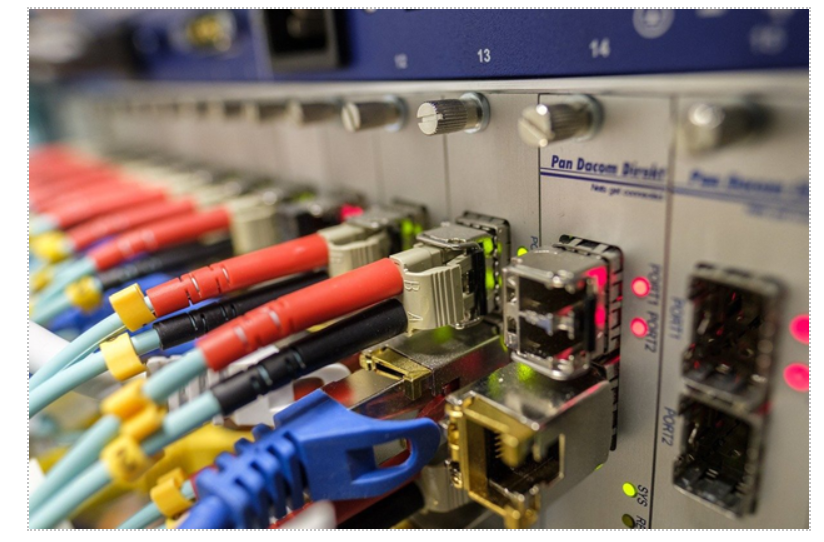
HPA- QSFP+-40G technology transcends the limitations of traditional Gigabit Ethernet solutions, offering a robust platform for a diverse range of network applications. Here’s a deeper dive into how HPA- QSFP+-40G is revolutionising connectivity across various sectors:
High-Performance Computing (HPC)
At the forefront of scientific discovery and complex simulations, HPC environments require the seamless exchange of massive datasets between compute nodes. HPA- QSFP+-40G’s exceptional bandwidth ensures high-speed data transfer, accelerating processing times and enabling researchers to tackle ever-more intricate problems.
Cloud Data Centres
The cornerstone of the cloud revolution, data centres house the virtualized infrastructure that powers modern applications. HPA- QSFP+-40G provides the agility and scalability cloud data centres require. Its ability to handle fluctuating workloads efficiently makes it ideal for supporting the dynamic nature of cloud environments. The use of HPA- QSFP+-40G for data centre applications is widely recognized on a global level.
Enterprise Network Backbones
The backbone of an enterprise network carries the critical traffic that keeps businesses operational. Upgrading to HPA- QSFP+-40G ensures smooth data flow within the core of your network. This translates to faster file transfers, improved application performance, and a more responsive user experience for employees across the organisation.
Storage Area Networks (SANs)
SANs centralise storage resources, providing high-performance access to data for multiple servers. HPA- QSFP+-40G facilitates rapid data exchange between servers and storage devices, enabling faster retrieval and manipulation of critical business information. This translates to increased efficiency and productivity for storage-intensive applications.
Emerging Technologies
As technologies like 5G and the Internet of Things (IoT) gain momentum, the demand for high-bandwidth, low-latency networking solutions will skyrocket. HPA- QSFP+-40G provides the foundation to support the data transmission needs of these future-oriented technologies. Its ability to handle large volumes of data efficiently makes it ideal for applications like real-time video streaming, remote device management, and sensor data aggregation.
SFP vs. QSFP+
SFP (Small Form-factor Pluggable Plus) has been the workhorse technology for Gigabit Ethernet connectivity for quite some time. However, with the ever-growing data demands, QSFP+ is reaching its limitations and there are quite many differences. Here’s a breakdown of the key differences between the two technologies:

Taking a Deep Dive into HPA- QSFP+-40G Technology
To fully understand the power of HPA- QSFP+-40G, let’s delve deeper into the technical aspects:
Standards and Specifications: HPA- QSFP+-40G adheres to a set of industry standards ensuring interoperability between different vendors’ equipment. These standards include SFF-8431 for the host channel interface and 802.3bs for 40 Gigabit Ethernet. Additionally, understanding material dispersion (OM ratings) for different fibre cable types is crucial for selecting the proper cabling infrastructure for your HPA- QSFP+-40G deployment.
HPA- QSFP+-40G Transceivers: These hot-pluggable modules come in two main varieties: copper and optical. Copper QSFP+-40G transceivers are ideal for shorter distances within a data centre, while HPA- QSFP+-40G optical transceivers offer extended reach capabilities using fibre optic cables. Choosing the right transceiver type depends on the distance you need to cover and the specific data rate requirements of your network.
HPA- QSFP+-40G Connectivity and Integration
Integrating HPA-QSFP+-40G transceivers into your network equipment is a straightforward process. The beauty lies in their compatibility with existing QSFP+ ports in some cases. This allows you to leverage your current network infrastructure while achieving significant bandwidth upgrades. Additionally, HPA- QSFP+-40G transceivers are hot-pluggable, enabling easy installation, removal, and maintenance without powering down your network devices.
When using copper QSFP+-40G transceivers, standard QSFP+ DAC (Direct Attach Cable) can be used for short-distance connections.
For fibre optic deployments, choosing the right transceiver module with the appropriate wavelength and reach is crucial. Common options include SR (Short Range), HPC-QSFP+-40G-LR (Long Range), and ER (Extended Range), each catering to different distance requirements.
HPA- QSFP+-40G for Data Centre Applications
Data centres stand to benefit immensely from HPA- QSFP+-40G technology. Here’s how:
High-density deployments are made possible with HPA- QSFP+-40G switch ports, allowing for more connections within a limited space. This translates to increased server density and improved data centre efficiency.
Top-of-Rack (TOR) switching applications benefit greatly from the high bandwidth offered by HPA- QSFP+-40G. This facilitates faster data exchange between servers and network devices at the rack level.
Power efficiency becomes a significant consideration in data centres. While HPA- QSFP+-40G transceivers have slightly higher power consumption compared to QSFP+, the overall benefits in bandwidth and scalability can often outweigh this factor.
Deployment Considerations and Troubleshooting
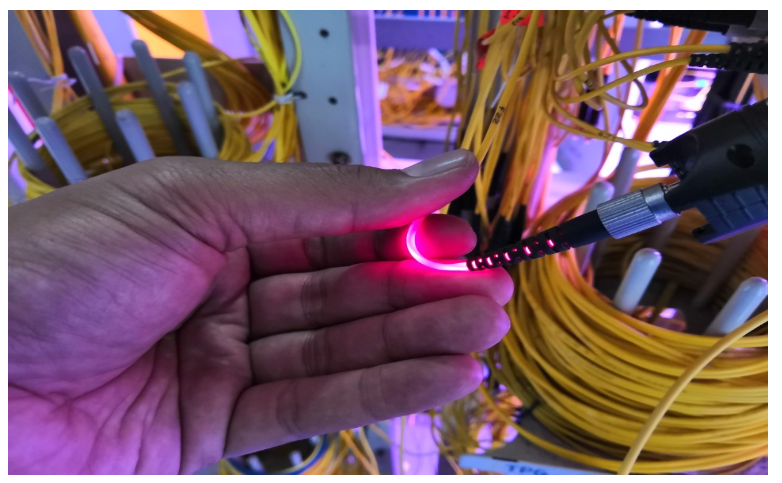
Now that you understand the technical aspects of HPA- QSFP+-40G, let’s explore some crucial factors to consider during deployment and troubleshooting techniques for common issues.
HPA- QSFP+-40G Compatibility: Ensuring compatibility between HPA-QSFP+-40G transceivers and your network equipment is paramount for successful deployment. Here are some tips:
Consult your network device’s user manuals or manufacturer websites for a list of compatible HPA- QSFP+-40G transceivers.
Verify the data rate, wavelength, and reach specifications of the transceiver match your network requirements.
Consider using reputable vendors that offer high-quality, compatible transceivers.
HPA- QSFP+-40G Troubleshooting: Even with careful planning, occasional connectivity issues can arise. Here’s how to approach troubleshooting:
Basic Checks: Start by verifying physical connections. Ensure the HPA- QSFP+-40G transceiver is firmly inserted into the port and the cables are securely fastened on both ends.
Physical Damage: Inspect the transceiver and cables for any signs of physical damage that could disrupt signal transmission.
Diagnostic Tools: Many network switches offer built-in diagnostic tools that can provide valuable information about transceiver status and potential errors. Utilise these tools to pinpoint the issue.
Vendor Support: If the problem persists, consult your network equipment vendor’s support resources. They can offer advanced troubleshooting assistance and potential firmware updates to address compatibility or HPA- QSFP+-40G connectivity issues.
Future of HPA- QSFP+-40G
The ever-evolving world of data networking demands constant innovation. As data traffic continues to surge, HPA- QSFP+-40G technology serves as a crucial stepping stone towards even faster and more efficient solutions. Here are some potential future advancements to consider:
Higher Data Rates: The industry is constantly pushing the boundaries of data transfer speeds. We can expect future iterations of QSFP+-based technologies to support even higher data rates, potentially reaching 100 Gbps and beyond.
Enhanced Integration: Seamless integration with next-generation network architectures like 25GbE and beyond is likely. This will ensure HPA- QSFP+-40G remains compatible with future networking advancements.
Form Factor Advancements: As technology miniaturisation continues, we might see even smaller form factors for transceivers, allowing for even higher port densities within network equipment.
Conclusion
HPA- QSFP+-40G technology presents a compelling solution for organisations grappling with the ever-increasing demands of modern networks. By offering significant bandwidth upgrades, improved scalability, and compatibility with existing infrastructure, HPA- QSFP+-40G paves the way for efficient data transmission.
So, if you are looking to order the finest HPA- QSFP+-40G optical transceivers the Megnet is your go-to place. Our catalogue has 100% OEM compatible devices with brands such as Cisco, Huawei, Aruba, Intel and many more. Explore our optimal collection range now!
FAQ's
Yes! Copper QSFP+-40G for shorter distances and optical QSFP+-40G for longer distances using fibre.
Consider the distance you need to cover, data rate requirements, and compatibility with your network equipment.
Ensuring transceiver compatibility, verifying cable connections, and utilising diagnostic tools for troubleshooting.
Check physical connections, inspect for damage, utilise network switch diagnostics, and consult vendor support if needed.
High-performance computing, cloud data centres, enterprise network backbones, storage area networks (SANs), and emerging technologies like 5G deployments.
Enables high-density deployments, faster data exchange within racks (Top-of-Rack switching), and improved efficiency despite slightly higher power consumption.
HPA- QSFP+-40G offers significantly faster data transfer rates (40 Gbps vs 10Gbps) but might have slightly higher power consumption.
We can expect advancements like even higher data rates (100gbps), seamless integration with future network architectures, and potentially even smaller form factors for transceivers.
The technology itself is not overly complex. However, careful planning, ensuring compatibility, and proper configuration are crucial for a successful deployment.
Absolutely! The high bandwidth can support the demands of high-definition and even 4K video streaming.
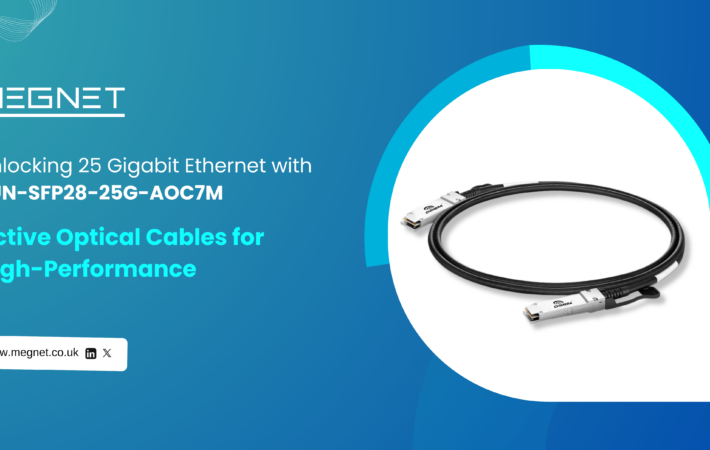
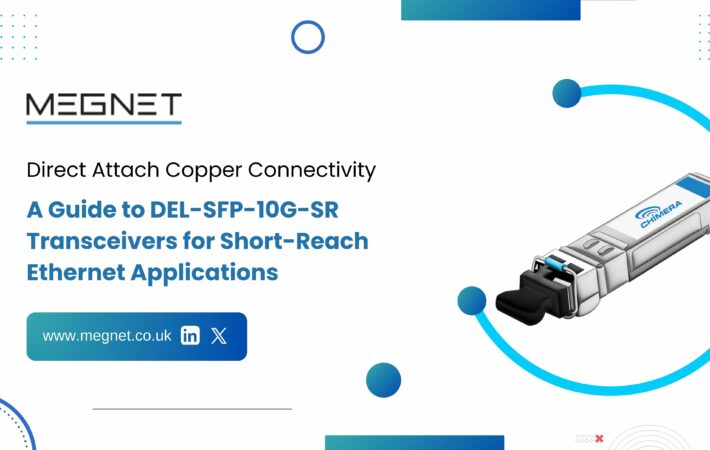
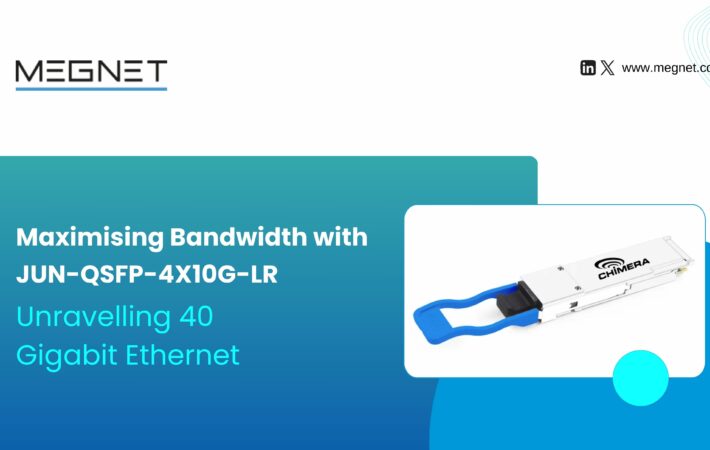
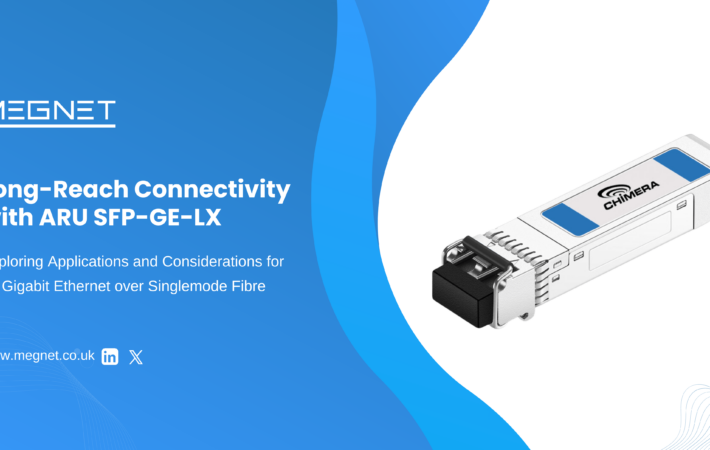
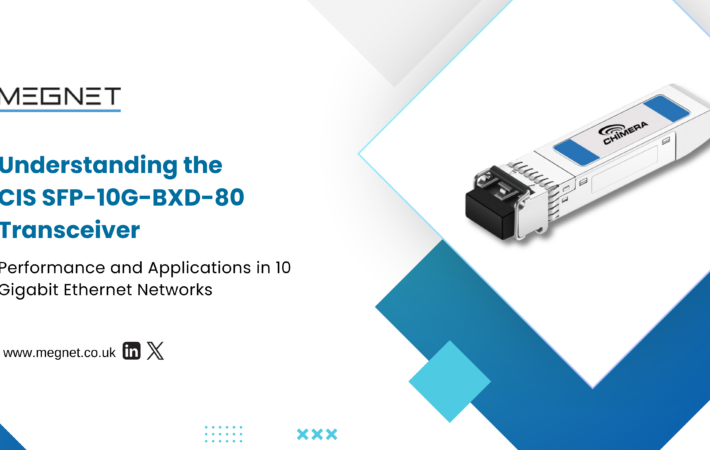


Leave a comment
Your email address will not be published. Required fields are marked *